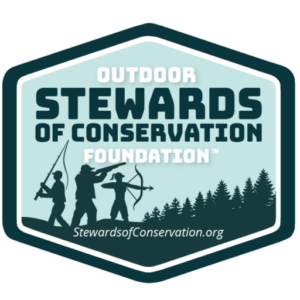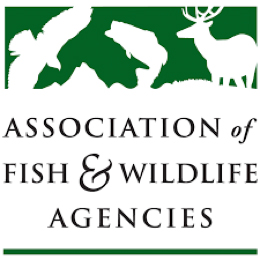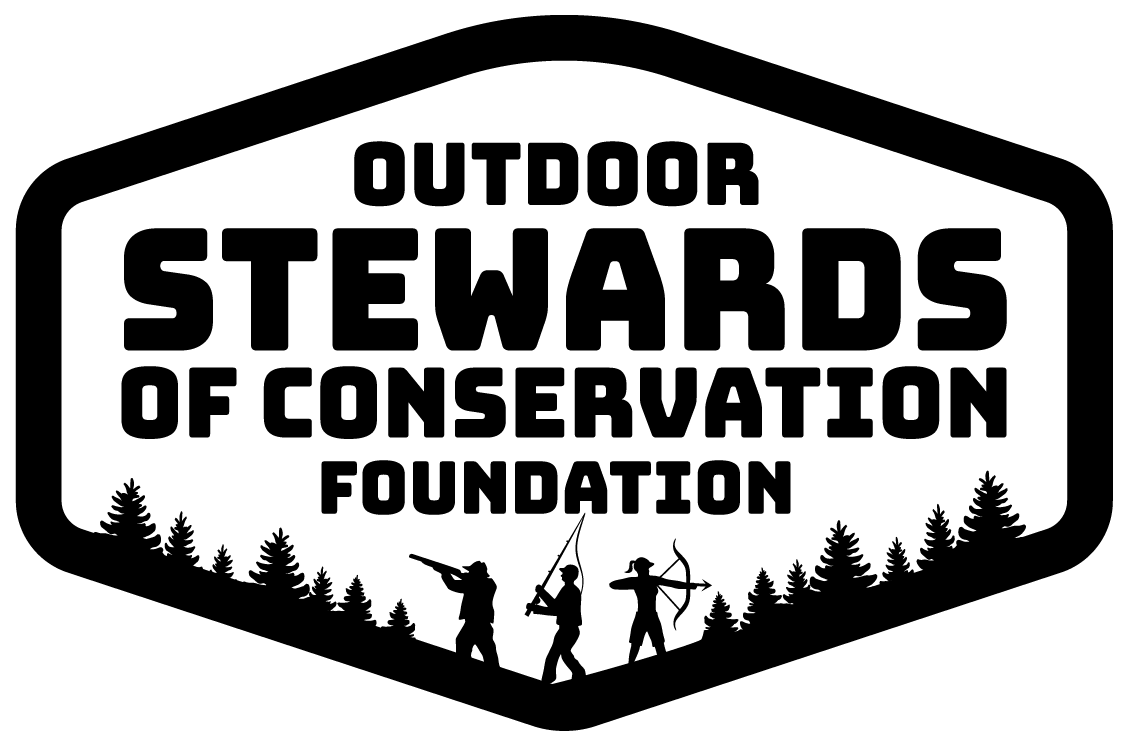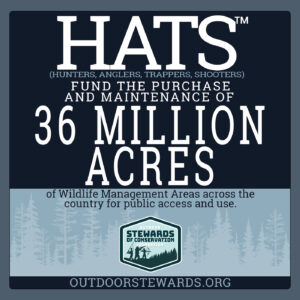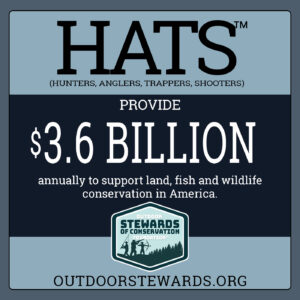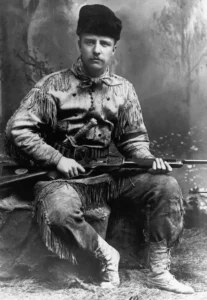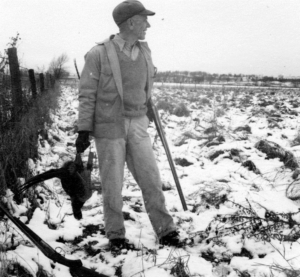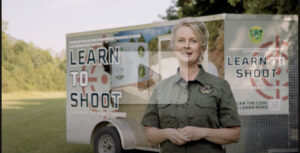How Land, Fish and Wildlife Conservation is Funded in America.
It may surprise you to know that there are more than sixty million active HATSTM (Hunters, Anglers, Trappers and Shooters) in America.
HATSTM come from every state, city and town across the nation. They are diverse in gender, age, ethnicity and ability. They spend more than 1.2 billion days outside each year enjoying the activities of hunting, fishing, trapping and target shooting.
There are many positive contributions that HATSTM make to society including:
- HATSTM personally clean up nature and work to improve habitats for flora and fauna to thrive.
- HATSTM ease the food supply chain by self-providing sustainable, organic, free-range protein to feed themselves, their families and friends.
- Hunters, trappers and anglers are the largest contributors of organic meat donations to food banks and are leading the effort to solve the hunger crisis in America.
- Hunting, fishing and trapping play a vital role in maintaining healthy wildlife populations.
- HATSTM provide funding that supports 36 million acres of public wildlife management areas.
- HATSTM are by far the primary funders of land, fish and wildlife conservation.
After watching our Public Service Announcement, you may be wondering how  hunters and target shooters, along with firearm, ammunition and archery manufacturers are primary funders of conservation in America.
hunters and target shooters, along with firearm, ammunition and archery manufacturers are primary funders of conservation in America.
The way that wildlife is funded and managed in America has remained virtually the same for nearly a century.
Each state has a wildlife agency or department of natural resources (DNR) that are tasked with managing lands to include healthy habitats for all creatures. DNR staff not only manage populations of huntable species like deer, bear, waterfowl, turkey and squirrels but also work hard to maintain healthy populations of non-huntable species such as eagles, hawks, bats, bees, and butterflies. State DNR staff include tens of thousands of dedicated wildlife professionals and trained biologists that use science-based research to manage for healthy lands and sustainable wildlife populations. Thousands of species rely on these professionals to survive and thrive.
The majority of the funding for state DNRs comes from HATSTM. In fact, HATSTM provide approximately $3.6 billion each year to support conservation – that’s $10 million every single day making HATSTM the primary funding source for land, fish and wildlife conservation in America. No other group comes close to directly funding conservation the way HATSTM do.
Annual breakdown of the $3.6 billion in conservation funding from HATSTM:
- $1.0 billion from the purchase of hunting and trapping licenses.
- $900 million from the purchase of fishing licenses.
- $1.4 billion from a portion of the sale of products HATSTM purchase such as: Guns, Ammunition, Bows, Arrows, Rods, Reels and Lures.
- $300+ million in donations and contributions to conservation focused organizations such as Ducks Unlimited, National Wild Turkey Federation, Rocky Mountain Elk Foundation, Pheasants Forever and Trout Unlimited.
A portion of this $3.6 billion allows state DNR to purchase lands for public access. Even though funding comes from HATSTM, all American’s can enjoy access to these lands. Every state across the nation has thousands of acres of Wildlife Management Areas (WMAs) that are accessible to all to enjoy. In fact, there are more than 9,000 WMAs with 36 million acres of publicly accessible lands across the nation. The WMAs are maintained by state DNR staff but funded by HATSTM and outdoor industry manufacturers.
Without funding from HATSTM and outdoor industry manufacturers, state DNR’s budgets would be decimated and thousands of their dedicated staff would lose their jobs. DNRs would no longer be able to manage lands and wildlife populations leading to a total collapse of ecosystems and biodiversity. Wildlife populations as we know them would cease to exist.
By far, the main factor in loss of wildlife is loss of habitat. The human population in America is expected to grow by 35 million people in the next 25 years. With this increase, humans will take over more and more habitat that once belonged to wildlife. It has been proven that where humans and wildlife coexist, humans must be involved with managing wildlife to maintain healthy populations. Hunting and trapping are important tools used by DNR wildlife biologists to maintain balance.
Just like wildlife populations, the population of HATSTM needs to be managed as well. Even though there are 60 million active HATSTM in America, many are starting to age out and retire from activities like hunting and trapping. If you currently participate in hunting, fishing, trapping or target shooting, consider asking someone new to Come With you to the range, field or waters.
If you are interested in learning one of these new skills, be sure to visit your state DNR website for information on getting started and don’t be afraid to ask someone you know that participates in these activities if you can Come With them the next time they head outside.
Infographics to share with your friends, family and co-workers: (tap to enlarge, then right click on desktop or long press if on mobile device to save image)
Founders of Wildlife Conservation:
Additional Resources
Alabama DNR video on how conservation is funded
How Hunters Pay for Conservation (Video)
Why Trophy Hunting Can Be a Good Thing for Animals (video)
Free Online Hunter Education Course
Find a Target Shooting Range Near You
United States Fish and Wildlife Service Information on Wildlife Conservation
Please share this Public Service Announcement with your friends, family, co-workers and customers:
https://www.youtube.com/watch?v=WGTFwx6a5Mg&t=58s


